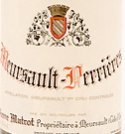|
Chardonnay Wine
However, despite its origins there, Chardonnay has been brought to many other wine growing regions the world over. Today, almost every important wine growing region produces at least some Chardonnay and some of the most famous examples come from areas outside of France, such as California. Despite its ubiquity, Chardonnay is indeed a special grape, capable of producing incredibly complex, elegant and long-lived dry white wines. While there are thousands of examples of simple, boring, inexpensive Chardonnay out there, it is truly capable of greatness. Where Is Chardonnay Wine Made?As mentioned above, most white Burgundy is 100% Chardonnay. This area in France still arguably produces the finest expressions of the grape and their price often reflects this fact. Most notably, the villages of the Cote de Beaune in Burgundy are where many of the most famous vineyards reside. In particular, the villages of Puligny-Montrachet, Chassagne-Montrachet and Meursault make some of the most distinctive examples of Chardonnay wine on the planet. The wines from the grand cru vineyards of Montrachet produce likely the most expensive, and sometimes the best, examples. Further north in Burgundy, the area of Chablis also produces stunning wines from the grape.Outside of Burgundy, Chardonnay is planted widely, although only producing great wine in a few areas. Still within France, Chardonnay is an important component of most Champagnes. While it is often blended with other grapes (notably Pinot Noir), some Champagnes are produced entirely from Chardonnay and called blanc de blancs. Italy has many examples. California has a huge slew of Chardonnay wines, often labeled simply as Chardonnay. These wines can vary tremendously but the best are often placed alongside Burgundy. A large amount of Chardonnay is also produced in Italy. What Styles of Wine Does Chardonnay Produce and What Do They Taste Like?For the most part, Chardonnay produces dry white wines. The large majority of wines produced are dry table wines with minimal or no residual sugar. There are rare exceptions. For example, I've tasted late-harvest dessert wines from Germany made from Chardonnay. But these are exceptions, most are dry wines.The actual style of the dry wines can vary somewhat depending on where they are grown and the winemaking style. In very general terms, Chardonnay is a full-flavored grape capable of making wines that are medium to full in body. Beyond that, the specific characteristics of the wines can vary considerably. For example, in the traditional wines of Burgundy the wines tend to be less ripe, with crisp acid and a profound minerality, giving the wines a nervous energy and lift when young. They are often very long lived, improving and changing for decades if well stored. The wines of Chablis, coming from further north than the rest of Burgundy, are grown in a cooler climate and the wines are thus generally even less ripe, with a vibrant, shimmering acid and mineral component, often compared to oyster shell and/or flint. In warmer climates, such as many parts of California and Austraial, where Chardonnay wine is produced from much riper grapes, the wines can be fatter and rounder, lower in acid. Some can even be creamy, often called "buttery". Some people cherish these wines for their lush richness while others feel they can be flabby, lacking definition and clarity. Another important factor in the character of wines produced from this grape variety is the use of oak aging. Although there are exceptions, Chardonnay is traditionally aged before bottling in small oak barrels. However, the type of barrels, the use of new versus old barrels and the time spent in barrel can greatly impact the wine. While less oak aging in older barrels often simply helps to round out the wine and let its flavors become more complex, excessive oak treatment can lead to very oaky and toasty aromas and flavors. More modern-styled producers often use more obvious oak. In our opinion, oak is only a good thing if it is in balance with the rest of the wine. Wines with too much oak often hide or detract from the rest of the wine. Return to the Grape Varieties section.  |



 Chardonnay wine is so widespread, it is practically ubiquitous in the world of wine and wine regions the world over. The grape variety is originally from, and best known for,
Chardonnay wine is so widespread, it is practically ubiquitous in the world of wine and wine regions the world over. The grape variety is originally from, and best known for, 


